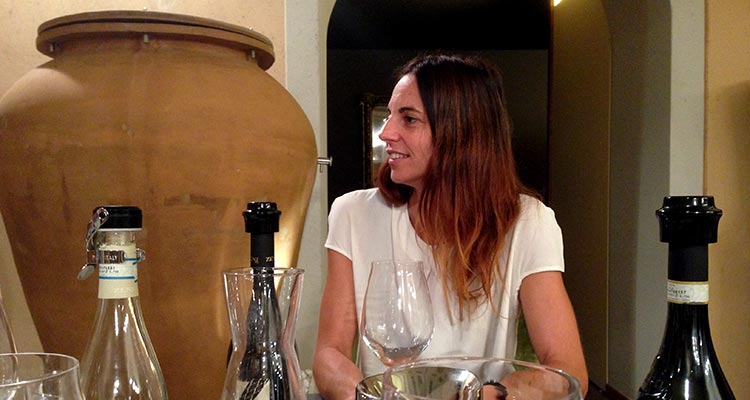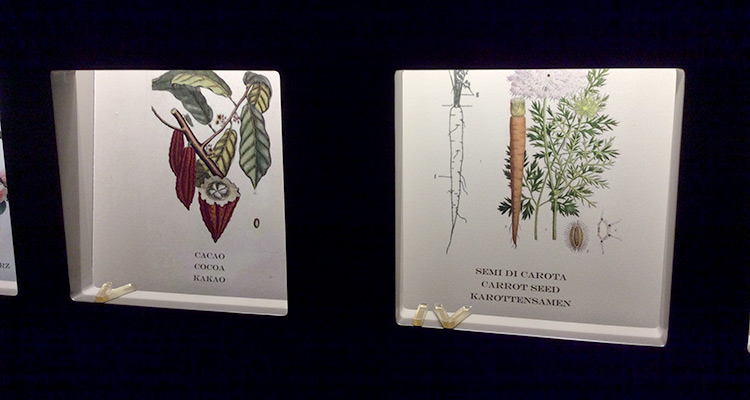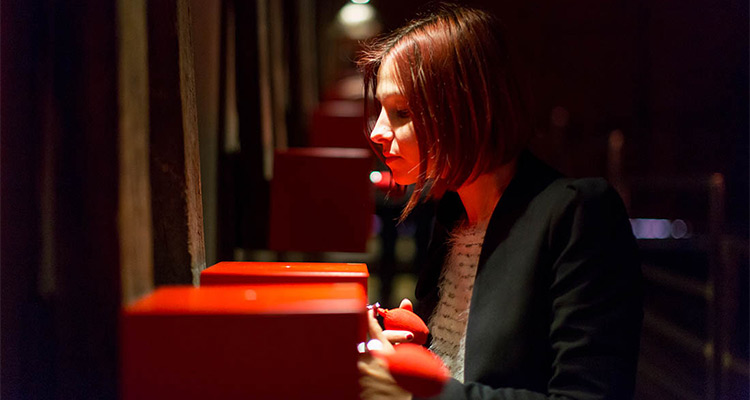What do a fine wine and a good perfume have in common? Exactly: the olfactory element. Why does this matter? Because our sense of smell can put us in contact with our deepest and most personal life experiences — as if we all were new Prousts seeking individual Madeleine moments.
One scent can trigger long-forgotten memories. But how frustrating is it, on the contrary, when a scent reminds us of something so familiar – yet its name lies just out of reach. Often this difficulty can be a real barrier to the appreciation of a wine because it’s only when we can name something that it becomes part of our knowledge and our own personal, cultural heritage.
Having a trained nose opens the door to endless sensorial worlds, and this is especially true for wine. Oenology professor Luigi Moio, also a well-known winemaker and consultant, explains this in his remarkable book Il Respiro del Vino [The Breath of Wine]: “Wine is the astonishing synthesis of the scents of everything that surrounds us, because it has in its deepest nature the traces of earth, flowers, fruits, spices, sea, mountain, wind, light and so many other things… [It] nobly represents intriguing perfume which it is impossible to resist, which anticipates all that you feel in your mouth immediately after bringing your glass to your lips… [Scent] is perhaps the most extraordinary sensory aspect of wine, because it is also the language of its composition, its history, its traditions, the lands in which it originates and the microclimate that caresses its days.”
I have found this to be true in my own experience, so I was immediately intrigued about the opening of an “Olfactory Gallery” in the Zeni winery near Lake Garda. As soon as possible, I visited and interviewed one of the estate’s owners, Elena Zeni. She told me the idea for the museum began when she was asking herself the eternal question for winemakers: how can we communicate about our wines more effectively and more creatively?

“One day,” she explained, “I was at a spa in a mountain hotel where they had a sort of ‘sea pathway’: rooms immersed in the darkness, in the midst of sea salt, with evocative music… A truly amazing immersive experience. And I realized I could create something similar involving wine. I thought about the scents of wine, and I brought in some friends: the architects Simone Spiritelli and Carlo Fantelli and the set designer Mattia Cussolotto. Together, we began to conceptualize the project and consider how we could set it up in an unused part of our winery.”
Other wineries have created displays of wine scents, but none so captivating and engrossing, because Elena’s concept combines wine aromas with music. She enlisted the help of music composer Nina Danon as well as professional nose Paola Bottai.
A nose is a creator of perfumes — a time-honored job that dates back to Ancient Egypt — which requires uncommon skills and complex courses of study. Elena asked Paola to sniff and taste their wines, and to re-create their component aromas. Paola chose to start from two flagship Zeni wines, the friendly Bardolino and the structured Amarone della Valpolicella.
Why did she go so far as to involve a parfumeur, I wondered.
“As wine producers, we are too accustomed to the scents of our wines,” she replied. “We always smell the same scents, but maybe there are others we aren’t able to perceive. That’s why I asked a professional to deconstruct the bouquet of our wines and recreate the scents she found in them. Today in our gallery, we have 14 aromas presented in 14 different olfactory stations. At each one, you spray them, sniff and have to try to recognize the smell.”
“It was so great to work with artists,” she continued. “Everything in the gallery was generated for a specific purpose: the colors of the boxes, the lights, the minimalistic furnishing. The music, too. I wanted a musical background which would help the visitor focus on the olfactory stations, so I asked a young Italian musician who lives in London to compose something. After a few tries, Nina composed a piece just 8 minutes long.”
As in the creation of a new perfume, all the aromas are totally pure. They are not available in vials like in the popular Le Nez du Vin box. “So far no one who’s visited the gallery has been able to recognize more than five of them,” Elena adds. “This experience is unique: it’s a challenge.”

After our conversation, I went to visit the gallery myself. First I sniffed the two wines, Bardolino and Amarone. Then I went around to the olfactory stations — and I must admit it was much harder than I thought it’d be. “Don’t be disappointed,” Elena tried to console me. “Some of the aromas are extremely difficult.”
But the experience has a rewarding, tangible conclusion: a complete tasting of Bardolino and Amarone in the elegant aging room, surrounded by barrels and barriques, with a pairing of cheeses.
In the end, visitors seem to leave happy and satisfied, even if they have recognized just three aromas. They welcome it as a training experience. “So far, the Olfactory Gallery is going well. Visitors are enthusiastic,” adds Elena. “And every year we’ll show two different wines — we produce 12 in total, reds and whites — and their aromas. This way, over time, people will have the opportunity to understand the different aromas our vineyards can offer.”
And voilà, a different and effective way to communicate the wine: starting with your nose.
Featured image via Zeni website.

